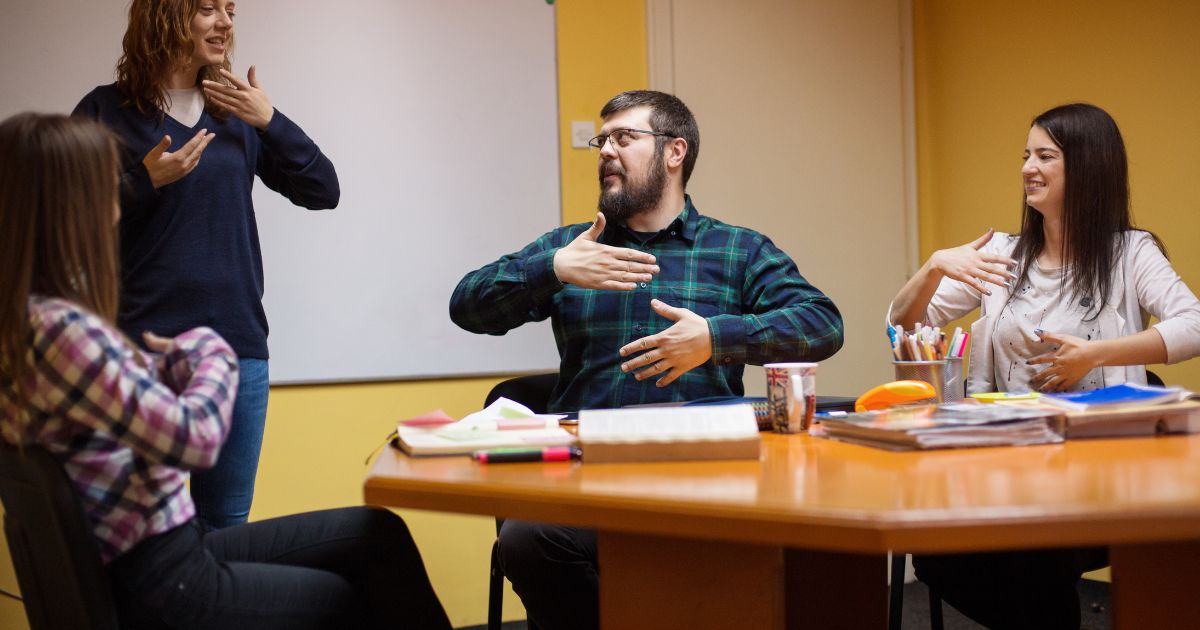What Does CLT Stand For? Exploring Language Teaching Essence
What Does CLT Stand For? In the realm of language education, “CLT” stands for Communicative Language Teaching—a transformative approach prioritizing real communication. This dynamic method revolutionizes language learning by emphasizing practical skills in authentic situations. Join us as we explore the impact and significance of CLT in modern language education.

What Does CLT Stand For?
What CLT stands for is not a complicated theory. CLT can stand for many different things depending on the context. Other possible meanings of CLT include the Central Limit Theorem, Chronic Lymphocytic Thyroiditis, and Cooperative Learning Techniques, among many others. Here are some of the most common purposes of CLT:
- Cross-laminated timber: an engineered wood product.
- Charlotte Douglas International Airport is the Charlotte, North Carolina airport code.
- Communicative Language Teaching: an approach to language teaching that emphasizes communication and interaction.
- Certificate of Land Transfer: a legal document in real estate transactions.
- Clinical Laboratory Technologist: a healthcare professional who performs laboratory tests.
CLT Features:
CLT stands for different things depending on the context. Still, since the previous question mentioned Communicative Language Teaching, we will focus on its features. CLT is an approach to language teaching that emphasizes communication, interaction, and meaning and that seeks to make language learning engaging and relevant to learners’ lives.
Here Are Some of The Main Features of Clt:
Emphasis on Communicative Competence:
CLT aims to help learners develop the ability to communicate effectively in real-life situations.
Focus on Interaction:
CLT emphasizes the importance of interaction between learners and between learners and teachers as a means of language learning.
Meaning-Based Approach:
CLT prioritizes meaning over form, meaning learners are encouraged to focus on understanding the message rather than grammatical accuracy.
Learner-Centered:
CLT is a learner-centered approach, which means that activities are focused on and driven by students instead of teachers.
Integration of Skills:
CLT integrates the four language skills (reading, writing, listening, and speaking) holistically.
Engaging:
CLT is engaging because it focuses on what the students want to talk about, which can make language learning more exciting and relevant to their lives.
Cooperative:
CLT encourages cooperative relationships among students and provides opportunities for group work and collaboration.
What Are the Principles of Communicative Language Teaching?
Communicative Language Teaching (CLT) is an approach to language teaching that prioritizes developing students’ communication and interaction skills. The principles of CLT emphasize the importance of authentic communication, learner-centeredness, and the integration of language skills. CLT aims to help learners develop communicative competence and to use language accurately and appropriately in real-life situations. Here are some of the main principles:
9 Core Assumptions in CLT:
1. Effective classroom learning involves the use of authentic language in context.
2. Language learning involves the development of the whole person, including attitudes, values, and beliefs.
3. A supportive and positive classroom climate facilitates language learning.
4. The use of a variety of authentic materials and activities facilitates language learning.
5. Language learning is facilitated by the use of tasks that involve learners in meaningful communication.
6. The use of cooperative and collaborative learning activities facilitates language learning.
7. Language learning is facilitated by the use of feedback that is timely, specific, and constructive.
8. Language learning is facilitated by using assessment that is integrated with instruction and reflects the goals of the curriculum.
9. Provide opportunities for learners to develop both accuracy and fluency.
How Can CLT Be Adapted for Different Age Groups and Proficiency Levels?
Communicative Language Teaching (CLT) is a flexible approach that can be adapted to cater to learners of different ages and proficiency levels.
Here are some ways that CLT can be adapted based on the search results:
Adapting to Different Proficiency Levels:
- Tailor activities and materials to learners’ needs and interests.
- Provide varying levels of support, scaffolding, and resources.
Adapting to Different Age Groups:
- Tailor activities and materials to each age group’s needs and interests.
- Emphasize interactive and engaging activities.
- Foster a sense of community and shared learning through peer collaboration.
FAQs:
How does CLT differ from traditional language teaching methods?
Communicative Language Teaching (CLT) differs from traditional methods by focusing on real communication over rote memorization. It emphasizes interactive and situational learning, fostering practical language skills in authentic contexts.
Is CLT suitable for learners of all ages?
Yes, CLT is adaptable and suitable for learners of all ages. While the specific activities may vary, the underlying principle of emphasizing communication remains universal, making it effective for both young learners and adults.
Can CLT be implemented in online language courses?
Absolutely. CLT’s emphasis on communication aligns well with online language courses. Virtual platforms provide ample opportunities for interactive and communicative activities, allowing learners to engage in meaningful language exchanges and simulations.
Also Read: FintechZoom Online Loans – Complete Guide for All Types of Loans
Conclusion:
What Does CLT stand for can be adapted in various ways depending on the context. For example, teachers can use task-based instruction, content-based instruction, or technology integration to enhance communicative competence. CLT is a flexible approach that can be adapted to meet the needs of learners of different ages and proficiency levels. Teachers can tailor activities and materials to learners’ needs and interests, provide varying levels of support, and encourage peer collaboration to foster a sense of community and shared learning.


